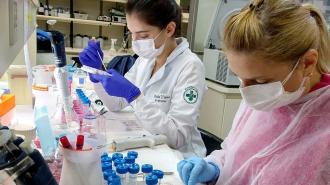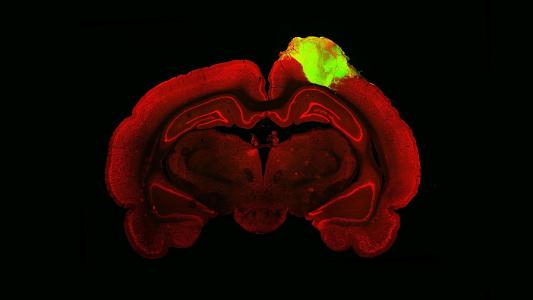Until recently, animal testing was one of the only ways for cosmetic and pharmaceutical industries to screen whether their products are safe enough for humans. The practice has always been divisive, sparking a long history of protests by animal rights groups. Yet with no reliable alternative techniques providing the same quality of results, companies and regulators had little choice but to rely on it.
Solutions in biotech: Recently, this situation has started to change. With the latest advances in bioengineering, artificial materials and lab-grown “organoids” are now being produced that can closely mimic the functions of human organs.
As these materials improve, there is now hope that they could one day replace animals altogether – allowing companies to test their products free from ethical concerns.
3D bioprinting allows researchers to build up the artificial epidermis, layer by layer.
One of the most promising emerging techniques in bioengineering is 3D bioprinting. Recently, it has been used to replicate the cellular structure of the epidermis — the outermost layer of human skin, which acts as a protective, waterproof barrier to infection.
The epidermis is itself made up of multiple layers – each characterised by unique structures of cells and proteins. To replicate this complex architecture, researchers have used 3D bioprinting to seed skin cells into collagen scaffolds via a nozzle – allowing them to build up the artificial epidermis, layer by layer.
In this case, there is hope that tests with bioprinted skin could be a reliable alternative to the controversial “Draize test” — a procedure approved by international guidelines where a product is applied to the skin of a live rabbit, then monitored for signs of irritation over the next two weeks.
Before this can happen, researchers will need to prove whether bioprinted materials really exhibit similar responses to animal skin when different chemicals are applied.
Running the gauntlet: In a new study, a team of researchers in Brazil put samples of bioprinted epidermis through a series of stringent tests, with the aim to confirm whether or not it can be held to the same standards as animal skin when testing chemical products.
Researcher Silvya Maria-Engler and colleagues at the University of Sao Paulo first examined cross-sections of bioprinted epidermis under the microscope, and compared them with samples of real skin.
The bioprinted skin could distinguish between irritants and non-irritants just as well as the real samples.
To simplify the task, they used fluorescent dyes which targeted specific biomolecules in the samples, allowing them to visualise their cellular structures more easily. In the colourful cross-sections, the researchers found that the artificial material exhibited all four of the key layers found in the real epidermis, each defined by their unique cellular architectures.
Having confirmed this structural similarity, Maria-Engler’s team next exposed real and bioprinted skin samples to various concentrations of a skin-irritating detergent. After 18 hours of exposure, the team didn’t notice any significant differences between the responses of real and artificial skin.
Finally, the researchers treated their samples with several different reference chemicals: some classed as irritants by international guidelines, while others were harmless, water-based solutions, and monitored the changes to their cellular architectures.
Yet again, the bioprinted epidermis could distinguish between irritants and non-irritants just as well as the real samples.
An end in sight for animal testing? Having sailed through this string of tests, Maria-Engler and her colleagues hope that 3D bioprinted skin could one day become the main platform for testing chemical products in the near future.
For now, the technology still isn’t quite advanced enough to replace animal testing completely. Further improvements to bioprinting techniques are needed, particularly to replicate the other layers of skin beneath the epidermis, which feature unique cellular structures of their own.
Cosmetics and pharmaceutical companies may soon be able to test new products both ethically and reliably.
And before it can be used to approve cosmetics for humans, bioprinted skin will need to pass the final hurdle, by proving to regulators it is as reliable as live animal tests in head-to-head comparisons.
All the same, the team’s results lay the groundwork for a promising new line of research, and have already attracted interest from companies like Natura – a major cosmetics manufacturer in Brazil, which funded part of the study.
If this momentum continues, cosmetics and pharmaceutical companies may soon be able to test new products both ethically and reliably – finally bringing an end to decades of controversy.
We’d love to hear from you! If you have a comment about this article or if you have a tip for a future Freethink story, please email us at [email protected].






